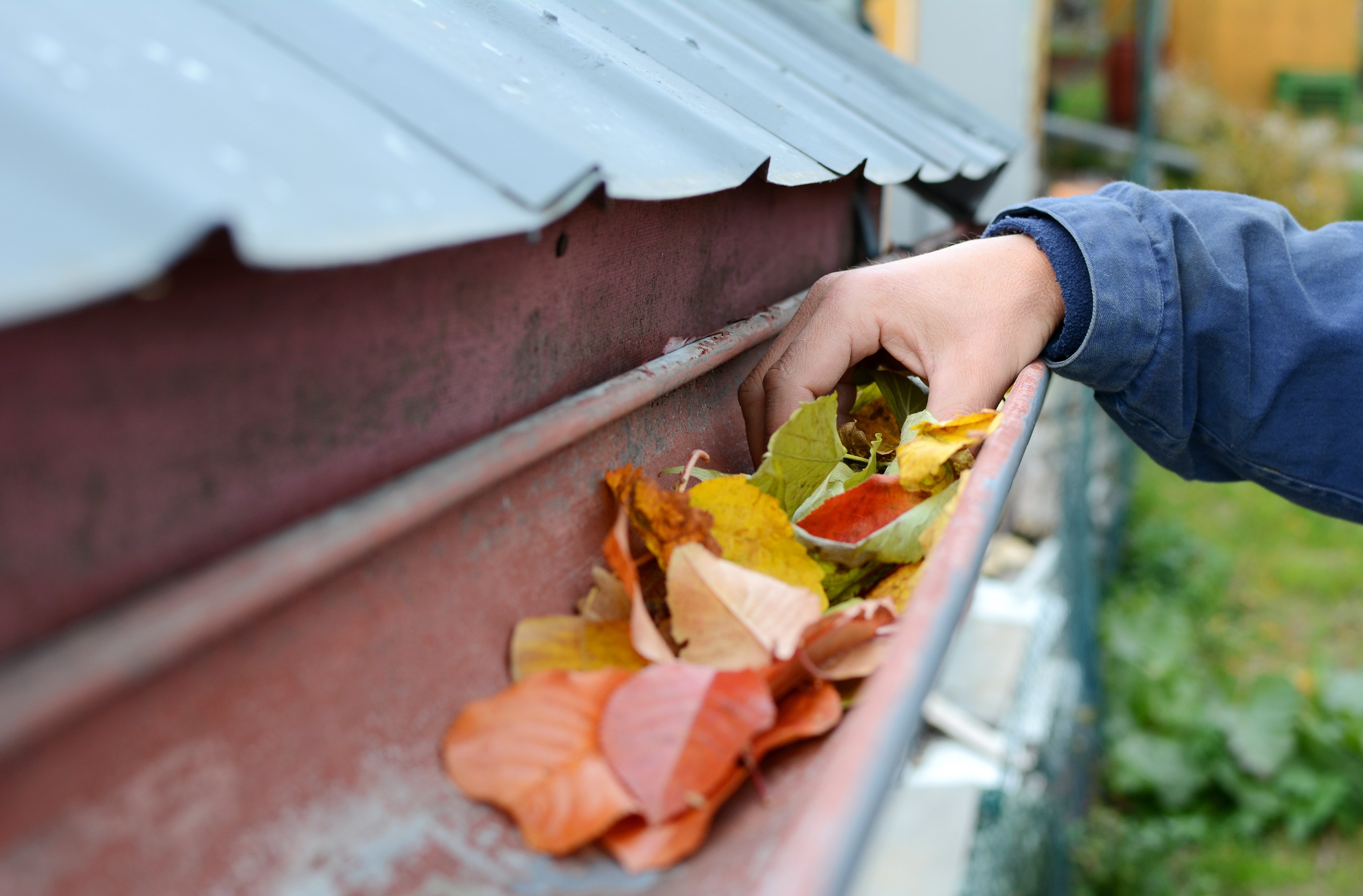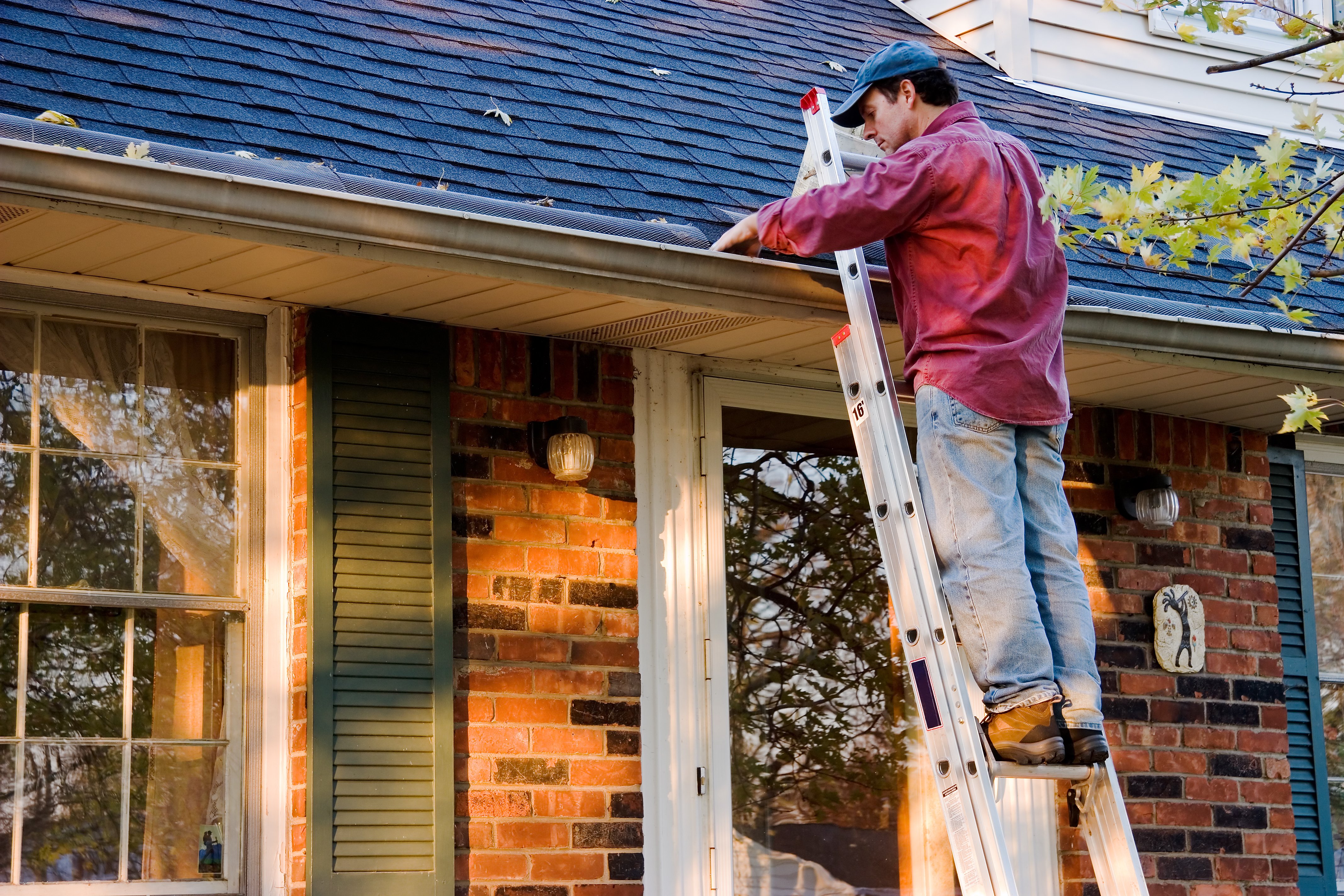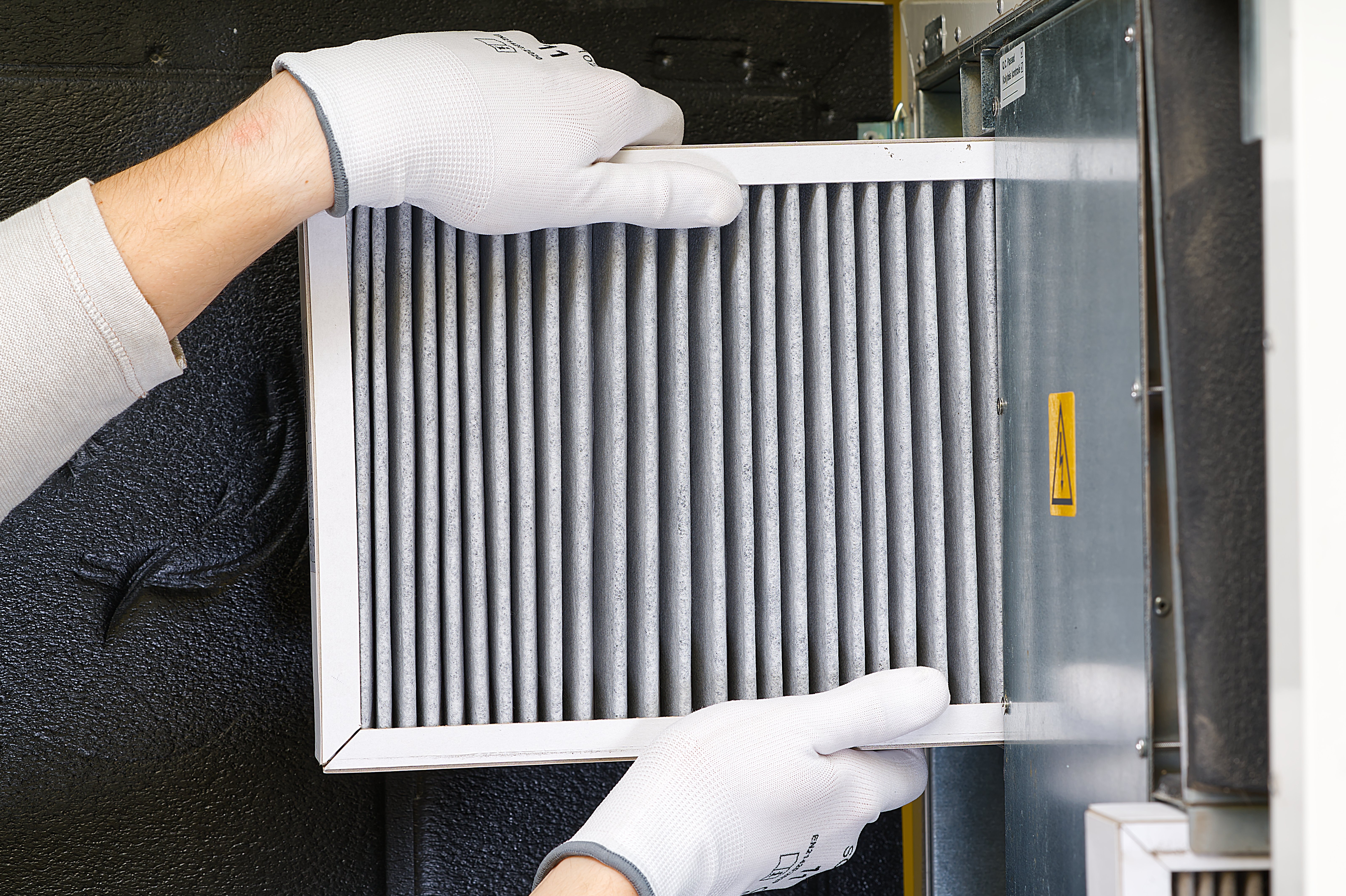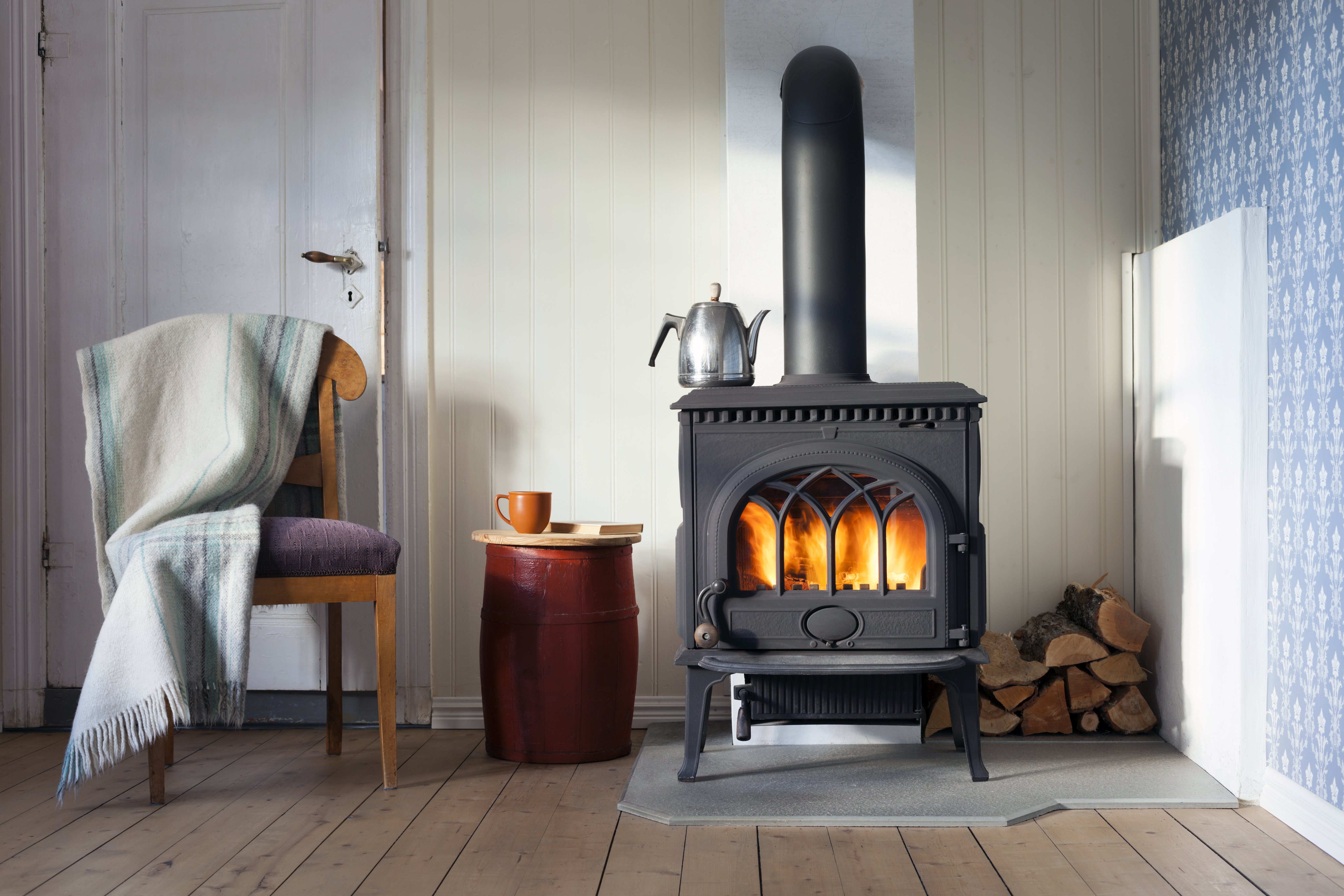Now that summer is over, it's time to prepare for the harsh weather conditions that come with fall and winter in Delaware! From falling leaves, cooler weather, and the dreaded winter storms, there are ways to protect your home now to avoid potential issues and expenses later in the season. This way, you can enjoy everything you love about autumn without worrying!

1. Clean your gutters.
Your roof's drainage system annually diverts thousands of gallons of water from your home's exterior and foundation walls—so it's vital to keep this system flowing smoothly. Clogged gutters can lead to damaged exterior surfaces and water in your basement. Gutters also more prone to rust and corrosion when clogged. Before the leaves fly this fall, clean your cutters and cover them with mesh gutter guards to keep debris out!
2. Seal up air leaks.
A home with air leaks around windows and doors is like a coat left unbuttoned. Gaps in caulk and weatherstripping let cold air into your warm home, and sealing up a drafty house can save up to 20 percent on your heating bills, according to the U.S. Department of Energy.
Weatherstripping is the most cost-effective way to weather-proof your Bayberry home and rein in heating and cooling costs year-round! Because weatherstripping can deteriorate over time, it is important to inspect it periodically. If you suspect a problem with your weatherstripping, try closing a door or window on a strip of paper. If the paper slides easily, your weatherstripping isn't properly sealing the opening. Alternatively, close the door or window and hold a lighted candle near the frame (but don't let the flame get near anything flammable). If the flame flickers at any spot along the frame, you have an air leak.
In addition to inspecting weatherstripping, check for missing or damaged caulk around windows, doors, and entry points for electrical, cable, phone, and gas. Seal any gaps with caulk. If drafts around windows persist, consider getting your windows replaced. Glass with multiple panes, spacers, or filler gasses (such as argon or krypton) will likely solve these problems. A professional can swap out your problem windows with more efficient models that will increase your level of comfort while decreasing your heating bills.

3. Inspect your roof.
Few homeowner problems are more daunting than a leaky roof! Get ahead of the problem this fall before ice and winter winds turn them from annoyances into disasters.
Start by inspecting your roof from top to bottom, using binoculars if necessary. Check ridge shingles for cracks and wind damage. Look for damage to metal flashing and around vents and chimneys. Scan the entire roof for missing, curled, or damaged shingles. Look in your gutters for large accumulations of granules, a sign that your roof is losing its coating, which can portend larger problems. Finally, make sure your gutters are flowing freely.
4. Protect faucets from freezing temperatures.
If you live in an area with freezing weather, take steps so that outside faucets and in-ground irrigation systems don't freeze or burst.
First, close any shut-off valves serving outside faucets, then open the outside faucet to drain the line (there may be a small cap on the faucet you can loosen to facilitate draining).To freezeproof an in-ground irrigation system, follow the manufacturer's procedures for draining and protecting it from winter damage.

5. Replace your furnace filter.
Furnace filters trap dust that would otherwise be dispersed throughout your home. Clogged filters make it harder to keep your home at a comfortable temperature and also increase your utility bills. An easy monthly cleaning all it takes to keep these filters free of debris. Disposable filters can be vacuumed once before replacement. Foam filters can also be vacuumed, but they don't need to be replaced unless they're damaged. Use a soft brush on a vacuum cleaner. If the filter is metal or electrostatic, remove and wash it with a firm water spray.
6. Give your furnace a checkup.
Once a year, it's a good idea to have your heating system inspected by a professional. To avoid the last-minute rush, consider scheduling this task in early fall, before the heating season begins. Here are signs that you should have an inspection performed sooner:
- Noisy belts: Unusual screeches or whines could be a signal that belts connected to the blower motor are worn or damaged.
- Poor performance: A heating system that doesn't seem to work as well as it once did could be a sign of various problems. Your heating ducts might be blocked, the burners might be misadjusted, or the blower motor could be on its last legs. The first step, however, is to make sure your furnace filter is clean.
- Erratic behavior: This could be caused by a faulty thermostat or a misadjusted furnace.
7. Ready your fireplace.
Even if you only occasionally use your fireplace, you should check it annually for damage and hazards. First, inspect the flue for creosote, a flammable by-product of burning wood. Too much accumulation in a flue or chimney can result in a devastating fire. Get your chimney inspected annually for creosote buildup. If you use a fireplace or wood stove frequently, have the flue inspected after each cord of wood burned.
For most people, the best option is to have your entire chimney system inspected by a chimney sweep. Once you know what to look for, you can perform the inspection by shining a bright flashlight up the flue, looking for any deposits approaching 1/8 inch thick. These deposits should be cleaned by an experienced chimney professional.
Additionally, check your chimney for damage or flue blockages. Ensure the flue cap (the screen or baffle covering the top of the chimney) is in place. Birds often nest at the top of unprotected flues, but; a chimney cap can prevent this from happening. If you don't have a cap, look up the flue to ensure that there are no obstructions. Inspect brick chimneys for loose or broken joints. If access is a problem, use binoculars. Inside, exercise the damper, which is the metal plate that opens and closes the flue just above the firebox. Move it to the open and closed positions to ensure that it is working properly.

8. Invest in a humidifier.
Dry winter air can be tough on your skin and airways, but did you know it can also make fine wood more prone to cracking? You and your home will feel more comfortable if you keep your central humidifier in tip-top shape during the months it's running. First, inspect the plates or pads, and if necessary, clean them in a strong laundry detergent solution. Rinse and scrape off mineral deposits with a wire brush or steel wool
9. Ward off gas problems.
Keeping a gas heater in good shape is both a safety and a cost issue. An improperly maintained heater can spew toxic gases into the air of your home, or it could simply be costing you more to operate. Have a professional check these devices annually. There are also some maintenance items you should address. First, shut off the heater. Then check the air-shutter openings and exhaust vents for dirt and dust. If they're dirty, vacuum the air passages to the burner and clean the burner of lint and dirt. Follow the manufacturer's advice for any other needed maintenance.

10. Keep wood fires burning clean.
Wood-burning stoves add cozy ambiance and warmth to your home, but regular inspections are needed to ensure that these devices don't become a safety hazard. Follow these steps to check your wood-burning stove:
- Inspect the stovepipes: Cracks in stovepipes attached to wood-burning stoves can release toxic fumes into your home. Throughout the heating season, you should check for corrosion, holes, or loose joints. Clean the stovepipe, and then look for signs of deterioration or looseness. Replace a stovepipe if necessary.
- Look for corrosion and cracks: Check for signs of rust or cracking in the stove's body or legs.
- Check safety features: Check that any required wall protection is installed according to the manufacturer's specifications and that the unit sits on an approved floor material. If you have young children, be sure to fence off the stove when it's in operation.
11. Repair walkways.
Damaged walkways, drives, and steps are a hazard year-round, but their dangers are compounded when the weather turns icy. Fixing issues in the fall is also critical to preventing little cracks from becoming expensive headaches. Look for cracks more than 1/8-inch wide, uneven sections, and loose railings on steps. Check for disintegration of asphalt or washed-out materials on loose-fill paths. Most small jobs are well within the ability of a DIYer, but save major repairs for experienced hands.
12. Review home safety.
At least once a year, do a top-to-bottom review of your home's safety features. This is also a good time to get the family together for a review of your fire evacuation plan. Use these steps to complete a home safety check:
- Smoke and carbon monoxide detectors: Replace the batteries in each smoke and carbon monoxide (CO) detector, then vacuum them with a soft brush attachment. Test the detectors by pressing the test button or holding a smoke source (like a blown-out candle) near the unit. If you haven't already, install a smoke detector on every floor of your home, including the basement.
- Fire extinguishers: Every home should have at least one fire extinguisher rated for all fire types (look for an A-B-C rating on the label). At a minimum, keep one near the kitchen; having one per floor isn't a bad idea. Annually, check the indicator on the pressure gauge to make sure the extinguisher is charged. Make certain that the lock pin is intact and firmly in place, and check that the discharge nozzle is not clogged. Clean the extinguisher and check it for dents, scratches, and corrosion. Replace if the damage seems severe. Note: Fire extinguishers that are more than six years old should be replaced. Mark the date of purchase on the new unit with a permanent marker.
- Fire escape plans: Every bedroom, including basement bedrooms, should have two exit paths. Make sure windows aren't blocked by furniture or other items. Ideally, each upper-floor bedroom should have a rope ladder near the window for emergency exits. Review what to do in case of fire, and arrange a safe meeting place for everyone away from the house.
- General cleanup: Rid your home of accumulations of old newspapers and leftover hazardous household chemicals. (Check with your state or local Environmental Protection Agency about the proper way to discard dangerous chemicals.) Store flammable materials and poisons in approved, clearly labeled containers. Keep a clear space around heaters, furnaces, and other heat-producing appliances.
13. Prep your lawn for winter.
To protect your lawn's health and beauty come spring, there are several important yard work projects to complete in the fall. Raking leaves and aerating will prevent your lawn and garden beds from suffocating. Fertilizing and winterizing grass, trees, and shrubs will allow your greenery to enter its winter slumber comfortably and properly nourished. Professional lawn care services will make quick work of these projects, freeing up your time for family, friends, and football.

14. Touch up exterior paint.
Fall offers plenty of days that are warm enough to paint outdoors, and a touch-up can help prolong the life of your siding and trim. A fresh coat of paint or sealer on any surface that potentially will be covered with snow, such as porch stairs or wood floors, also is a wise idea. Sooner is better for contacting a local painter or attempting the project yourself, as many paint applications aren't recommended on days when the temperature will dip below 45° to 50°F.
15. Clean your carpets.
Fall is an ideal time t clean the carpets! The humid days of summer have passed, but the below-freezing days of winter have yet to arrive. It's the best time to open windows for ventilation, which should speed the drying process. If you're not comfortable operating a carpet cleaning machine, let a professional wrangle the bulky cleaning equipment. With a house full of wet carpet, you'll want to get outdoors and enjoy the lingering warm days.





